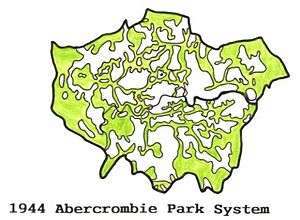Park system

A park system, also known as an open space system, is a network of open spaces which are connected by public walkways, bridleways or cycleways. In modern landscape practice, the park system concept is being overtaken by the idea of planning greenways which run through urban and rural areas.
One of the earliest park systems, in London, came into existence more or less by chance. As London expanded round former royal parks in the nineteenth century, St. James's Park, Green Park and Hyde Park became part of the urban area. This arrangement was admired in France and adopted for the nineteenth century re-planning of Paris by Baron Haussmann. It was also admired by Frederick Law Olmsted and used to create the famous Emerald Necklace in Boston.
In 1927, the Maryland-National Capital Park and Planning Commission was formed to plan and acquire parklands along stream valley corridors in the then-rural northern and eastern suburbs of Washington, D.C. Over 33,000 acres (130 km²) are now protected in the Montgomery County, Maryland, portion and provide welcome green space in this urbanized region. A major proposal for a park system was included in Patrick Abercrombie's 1943-4 County of London Plan.
The largest continuous urban parks system in North America is the North Saskatchewan River valley parks system in Edmonton, Alberta, Canada, which is 7,400 ha (18,000 acres) in size and 48 km (30 mi) in length, and also includes 22 ravines, which have a combined total length of 103 km (64 mi).[1] The largest urban parks system in Australia is the Western Sydney Parklands, which is 5,280 ha (13,000 acres) in size and 27 km (17 mi) in length.[2]
See also
References
- ↑ "Ribbon of Green: North Saskatchewan River Valley and Ravine System Master Plan" (PDF). City of Edmonton. Retrieved 2011-09-20.
- ↑ "Western Sydney Regional Park Draft Plan of Management" (PDF). NSW Government. Retrieved 16 May 2013.
It is approximately 5,280 hectares in size and is the largest urban park in Australia